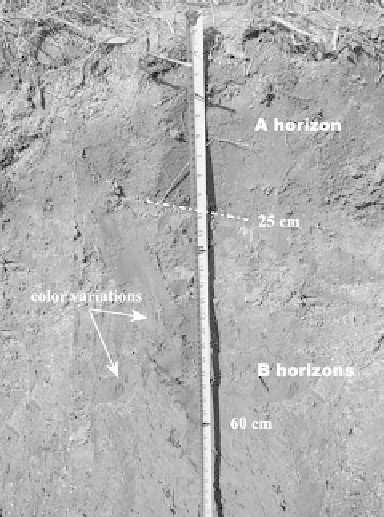Agriculture Reference
In-Depth Information
Figure
9.3.
Soil profile on Steve's farm. Note the distinctive A horizon that extends to a depth
of 25 m. The lower horizons show variations in color associated with the soil being saturated
with water for a significant period of time during the year. When pit was dug in June, water
was encountered at a depth of 1 m.
9.2
INTRODUCTION
All food production depends on soil. It is the medium in which the vast majority of our
food is produced. This is true for both cultivated plants and food obtained from wild
plants and animals. For those people that depend on animal products for their suste-
nance, the animals they depend on eat plants growing in soil. Even fish food used in
raising fish on fish farms depends on crops grown in soil. Soil is even involved in fish
growth in the wild because dissolved soil minerals and organic matter carried into
bodies of water, including oceans, are part of the food of marine plants and animals.
Soil is at the same time absolutely common and extremely complex.
Soil is common in that almost every person sees it every day or at least sees plants
growing in it every day. Excepting places where bare rock is exposed or where there are
bodies of water, it is the common covering of Earth's surface. Most people have plants
growing around and in the home. In many cases plants inside the home are grown in
artificial soil since the inside of a house is not the natural environment for soil and it
does not do well under these conditions. It is also in the air as dust and in water as sus-
pended material, for example, muddy water.
Soil can be discussed on a large, medium, small, or molecular scale. On the large scale,
soil covers the Earth and as such it makes up the topography, or lay of the land. It has slope,
aspect, the direction a slope is facing (i.e., north, south, east, or west), and depth.









